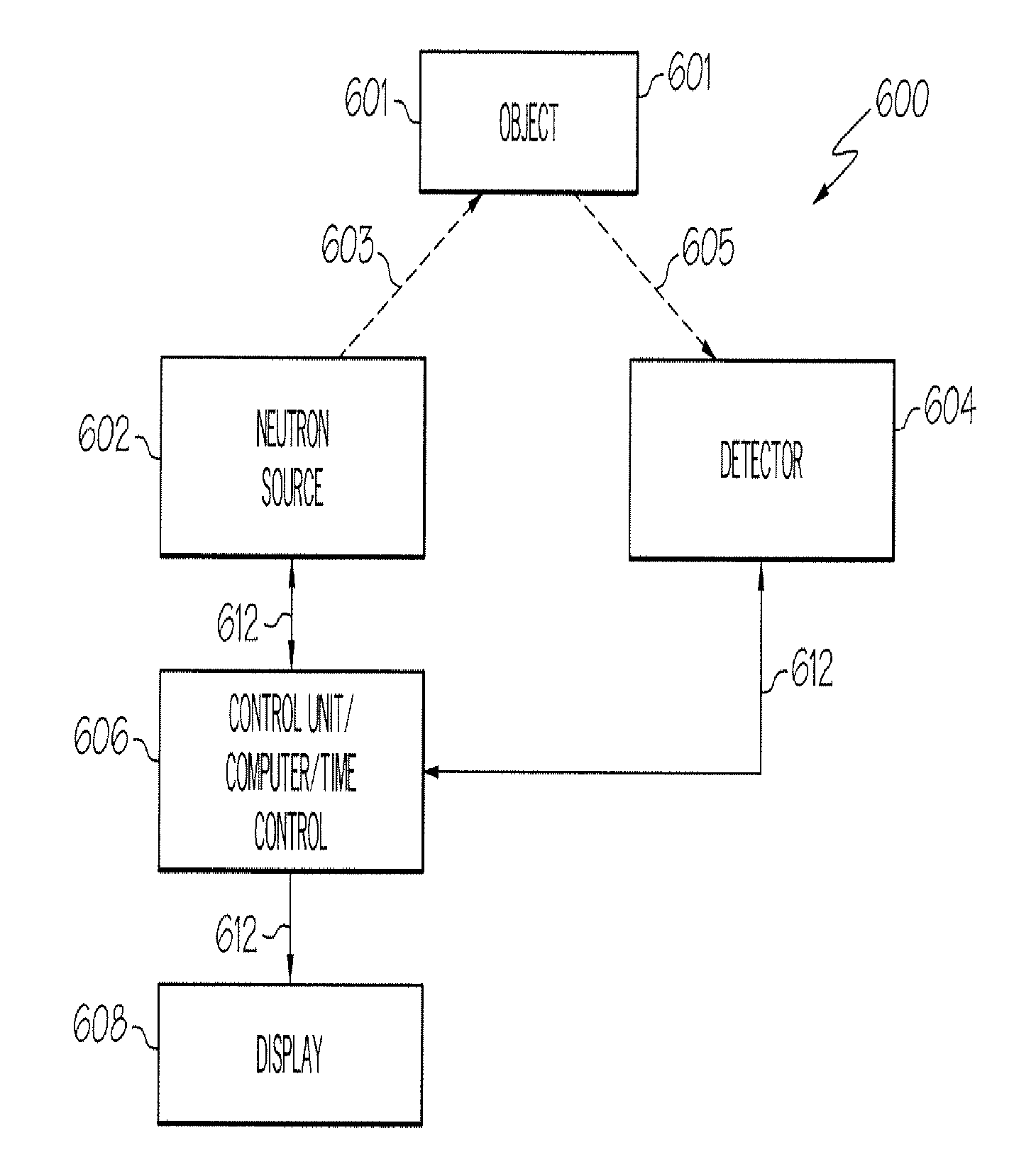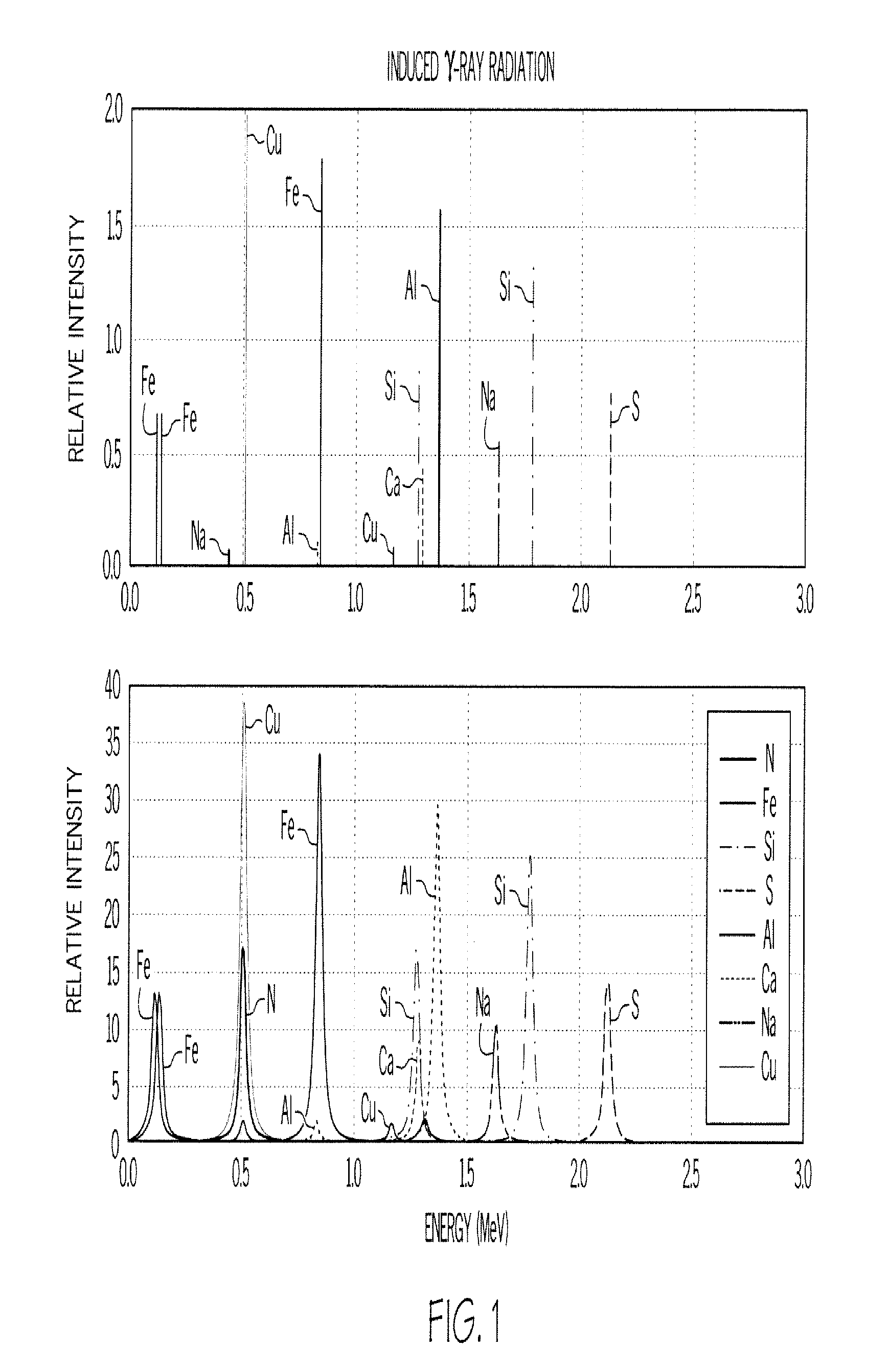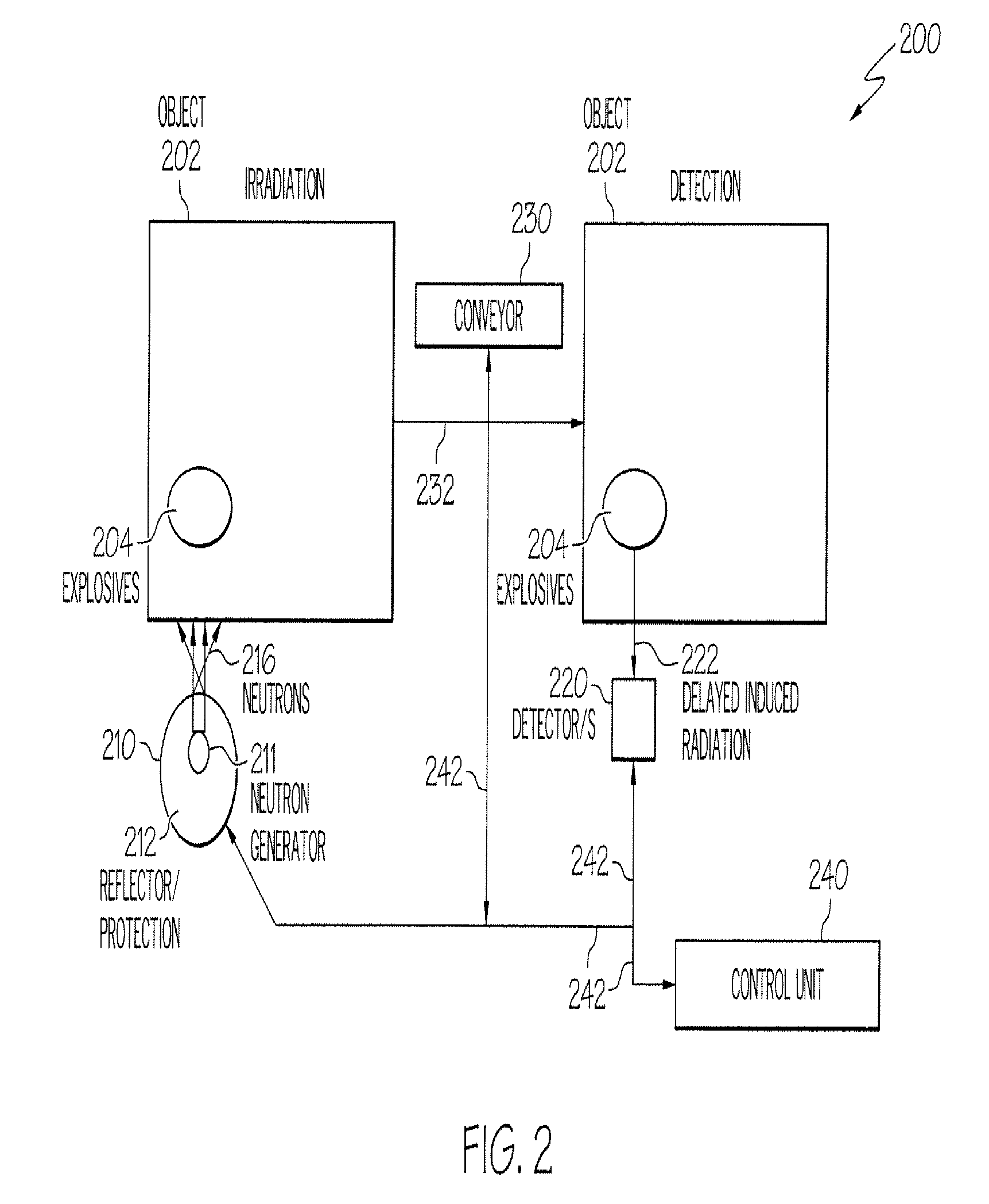Explosives detector
- Summary
- Abstract
- Description
- Claims
- Application Information
AI Technical Summary
Benefits of technology
Problems solved by technology
Method used
Image
Examples
example 1
Technology for Suitcases, Luggage, Break Bulk Cargo
[0050]1. Detection of explosives is provided by registration of secondary delayed radiation induced in the nitrogen N14 of explosives under irradiation by the fast neutron flux from compact neutron generator (CNG). For the first estimation the simplest and cheap compact neutron generator with output 109 n / sec is used.
2. Registration of induced gamma-radiation from N13 with energy 0.511 MeV follows β+ decay caused by irradiation of N14 by fast neutrons with energy 14 MeV.
Conditions:
[0051]1. Detection of explosives in suitcases, boxes, and break bulk cargo (40×60×100 cm). Content: clothes, shoes, personal and household items, different supplies, CDs, DVDs, and VHS tapes, etc. Attenuation of the primary neutron flux does not exceed 1.5 (for such average content density ˜1 g / cm3, neutron macroscopic removal cross-section ˜0.08-0.09 cm−1). Attenuation of the secondary induced gamma-rays does not exceed 1.5 (linear macroscopic coefficient...
example 2
[0055]Even better results can be achieved by using the technology when physical parameters of the tested object content are known, predictable or limited, for instance explosives in UXO and buried antitank mines.
For instance:
1. Detecting explosives in UXO. The presence of only a metallic shell permits prediction of the energy distribution of the background radiation (Table 1, Iron and or Copper) and significantly increase ratio of signal to background by choosing substantially exact irradiating and detecting time and substantially exact energy diapason / s for detecting signal (explosives element / s) and background (shell elements).
[0056]Detecting of induced N and Fe, and discriminating Fe by simultaneous detection of other energy of induced Fe (0.117, 0.134) MeV and / or 0.845 MeV. There must be strong correlation between Fe secondary in the “signal” range and Fe secondary in the other range. The same situation with discriminating influence of Cu by simultaneous detecting of 1.17 MeV.
[0...
PUM
 Login to View More
Login to View More Abstract
Description
Claims
Application Information
 Login to View More
Login to View More - R&D
- Intellectual Property
- Life Sciences
- Materials
- Tech Scout
- Unparalleled Data Quality
- Higher Quality Content
- 60% Fewer Hallucinations
Browse by: Latest US Patents, China's latest patents, Technical Efficacy Thesaurus, Application Domain, Technology Topic, Popular Technical Reports.
© 2025 PatSnap. All rights reserved.Legal|Privacy policy|Modern Slavery Act Transparency Statement|Sitemap|About US| Contact US: help@patsnap.com



